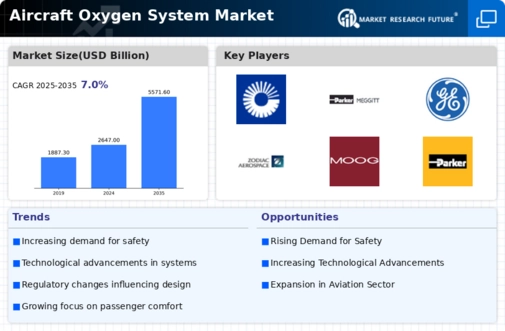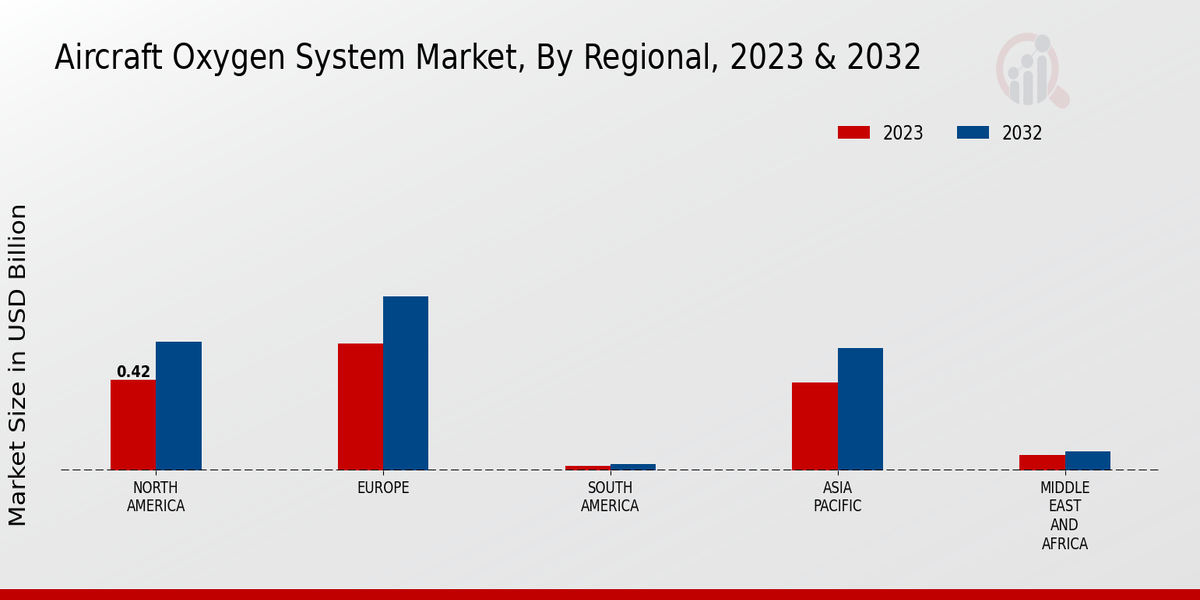Increasing Demand for Air Travel
The Global Aircraft Oxygen System Market Industry is experiencing a surge in demand driven by the increasing global air travel. As passenger numbers are projected to reach 4.5 billion in 2024, airlines are compelled to enhance safety measures, including the implementation of advanced oxygen systems. This trend is likely to contribute to the market's growth, as the industry adapts to accommodate larger aircraft and longer flights. The need for reliable oxygen systems becomes paramount, ensuring passenger safety at high altitudes. Consequently, the market is expected to expand significantly, aligning with the projected market value of 2647.0 USD Billion in 2024.
Growth of Military Aviation Sector
The Global Aircraft Oxygen System Market Industry is also bolstered by the growth of the military aviation sector. As defense budgets increase globally, there is a heightened focus on enhancing the capabilities of military aircraft, including the integration of advanced oxygen systems. These systems are crucial for high-altitude missions where pilots require supplemental oxygen to maintain performance and safety. The increasing procurement of advanced fighter jets and transport aircraft is likely to drive demand for sophisticated oxygen systems. This trend suggests a robust market expansion, as military investments are projected to contribute significantly to the overall market growth.
Emerging Markets and Regional Expansion
Emerging markets are playing a pivotal role in the Global Aircraft Oxygen System Market Industry, as countries in Asia-Pacific and Latin America expand their aviation sectors. With rising disposable incomes and urbanization, air travel is becoming more accessible, leading to increased aircraft purchases. This regional expansion necessitates the implementation of advanced oxygen systems to meet safety standards and enhance passenger experience. As these markets develop, they are expected to contribute substantially to the market's growth, aligning with the overall trend of increasing global air travel and safety requirements.
Regulatory Compliance and Safety Standards
The Global Aircraft Oxygen System Market Industry is significantly influenced by stringent regulatory compliance and safety standards imposed by aviation authorities. Organizations such as the Federal Aviation Administration (FAA) and the European Union Aviation Safety Agency (EASA) mandate that aircraft must be equipped with reliable oxygen systems to ensure passenger safety during emergencies. This regulatory framework compels manufacturers to innovate and enhance their oxygen systems, thereby driving market growth. As airlines invest in compliance to meet these standards, the market is expected to grow at a compound annual growth rate (CAGR) of 7.0% from 2025 to 2035, reflecting the ongoing commitment to safety in aviation.
Technological Advancements in Oxygen Systems
Technological innovations are reshaping the Global Aircraft Oxygen System Market Industry, with advancements in oxygen delivery systems and monitoring technologies. New systems are being developed that offer improved efficiency, reliability, and ease of use. For instance, the integration of digital monitoring systems allows for real-time tracking of oxygen levels, enhancing safety protocols. These innovations not only improve operational efficiency but also align with regulatory requirements for safety. As a result, the market is likely to witness a robust growth trajectory, potentially reaching a valuation of 5571.6 USD Billion by 2035, driven by these technological enhancements.






















